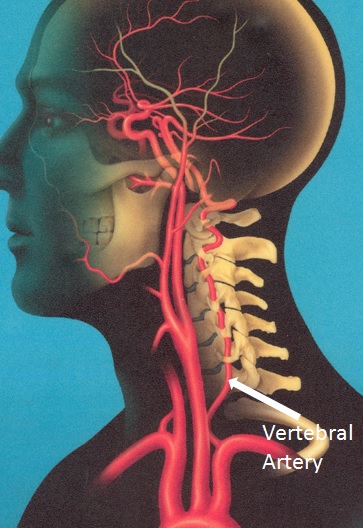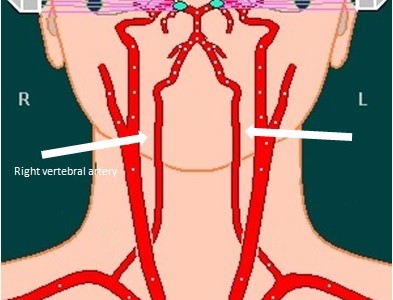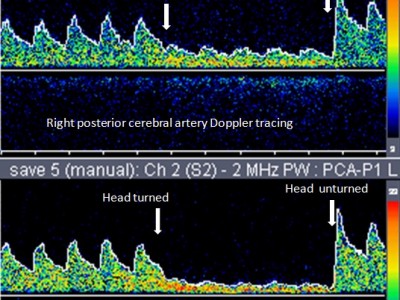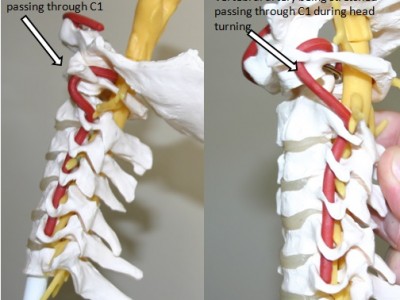For an appointment about pain, symptoms, risks, and treatment contact us or to learn more about your world renown surgeons at Seattle Neuroscience Institute visit our home page.
Seattle Neuroscience Institute
- Home
- Conditions & Treatments
- Arteriovenous Malformation AVM
- Brain Aneurysm | Cerebral Aneurysm
- Carotid Artery Disease
- Cavernous Malformations
- Colloid Cyst
- Glossopharyngeal Neuralgia
- Hemifacial Spasm
- Meningioma
- Minimally Invasive Spine Surgery
- Moyamoya Disease
- Spinal Canal and Spinal Cord Tumors
- Transient Vertebrobasilar Insufficiency
- Trigeminal Neuralgia Treatment
- Research & Publications
- Practice Locations
- About
- Contact
Transient Vertebrobasilar Insufficiency
Transient vertebrobasilar insufficiency (VBI) caused by head turning, also known as head turning syncope, is increasingly being recognized as a potentially incapacitating and debilitating condition. It refers to a reduction in blood flow to the posterior part of the brain and posterior cerebral circulation caused by turning the head and temporarily blocking blood flow through the veretebral artery in the neck. It is important to recognize classical clinical symptoms as well as the diagnostic workup which is important to establish an anatomic lesion responsible for clinical symptoms. Fortunately it is also can be successfully treated in many cases by surgical intervention, by removing the site of compression of the artery. Excellent results depend on making a correct diagnosis and defining the site of vertebral artery (VA) compression. Transient compression of the vertebral arteries can also cause injury, dissection of the artery, more permanent blockage of the artery, and transient mini-stroke events events and stroke. This condition has also been referred to as Bow Hunter’s Stroke, Bow Hunter’s Syndrome, or Head Turn Syncope.
Symptoms
- Near or true fainting or passing out with head turning
- Feeling severely weak and dizzy with head turning
- Double vision or swallowing difficulties with head turning
Causes
- Blood flow reduction, slowing or stopping due to kinking of the vertebal artery when the head is turned at the upper neck ( at cervical 1 and 2 vertebrae)
- Blood flow reduction, slowing or stopping due to kinking of the vertebal artery when the head is turned at the lower part of the neck from bone spurs or osteophytes in the neck
- Usually there is blockage, or absence of from birth, the other vertebral artery that usually takes over when one of the arteries is kinked
Risk Factors?
- Cerebral vessel blockage from hardening of the arteries, or atherosclerosis
- Osteoarthritis or bone spurs in the neck
Diagnosis
Your doctor will ask about your symptoms and medical history. A physical exam will be done. Tests may include:
- Transcranial Doppler while head turning can determine if there is a reduction of blood flow in different head positions.
- Angiography — uses contrast material to see blood vessels in different head positions
- Images of the neck with intravenous contrast material may be taken with an MRI or CT scan
Prevention
There are no current guidelines to prevent the development of head turn syncope.
Treatment
Limitation of head rotation is a treatment option. This can be advised in patients who only experience mild symptoms, or symptoms in extreme head positions, or those who are not surgical candidates. Surgical treatment is indicated in patients with recurrent and incapacitating symptoms who clearly demonstrate hemodynamically significant compression of the vertebral artery.
The surgical procedure is dictated by the site of compression and angiographic and computed tomographic findings. In the lower neck, or cervical spine, the most common pathology is overgrowth of the joint at the lateral side of the cervical disc producing compression and scarring of the tissue around the vertebral artery which can be compressed to the point of temporary arterial occlusion upon head turning. It is our experience that the transient compression and arterial narrowing is produced when the head is turned toward the side of the lesion. There are also reports of lateral disc herniation producing a similar degree of positional arterial narrowing and transient symptoms.
The surgical treatment of the upper cervical spine or neck is required if the artery is being kinked by head turning in this region. The opening in the bone where the artery passes through at the first cervical vertebrae, or C-1, is opened up widely by removing part of the bone so it no longer kinks the artery when the head is turned.




